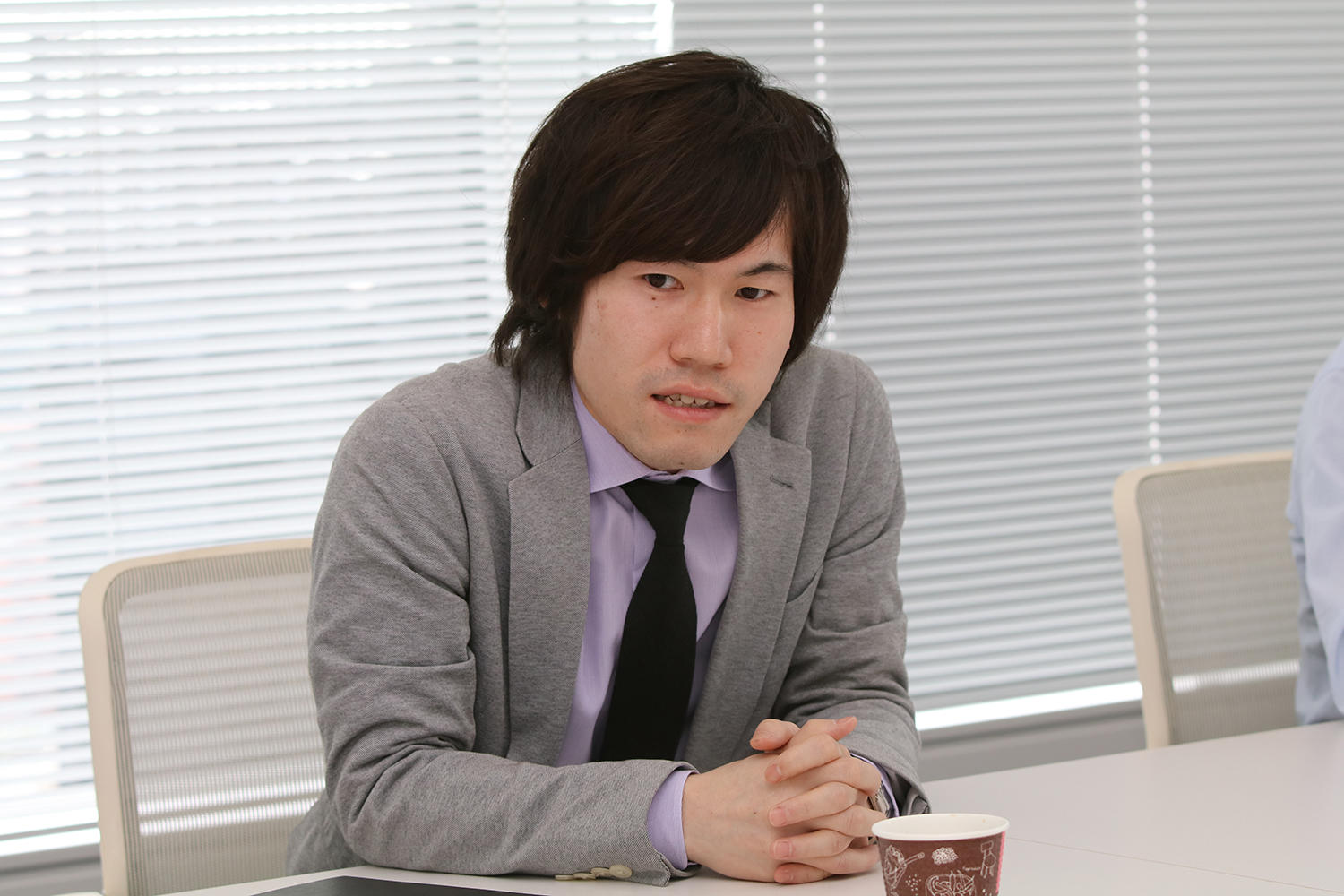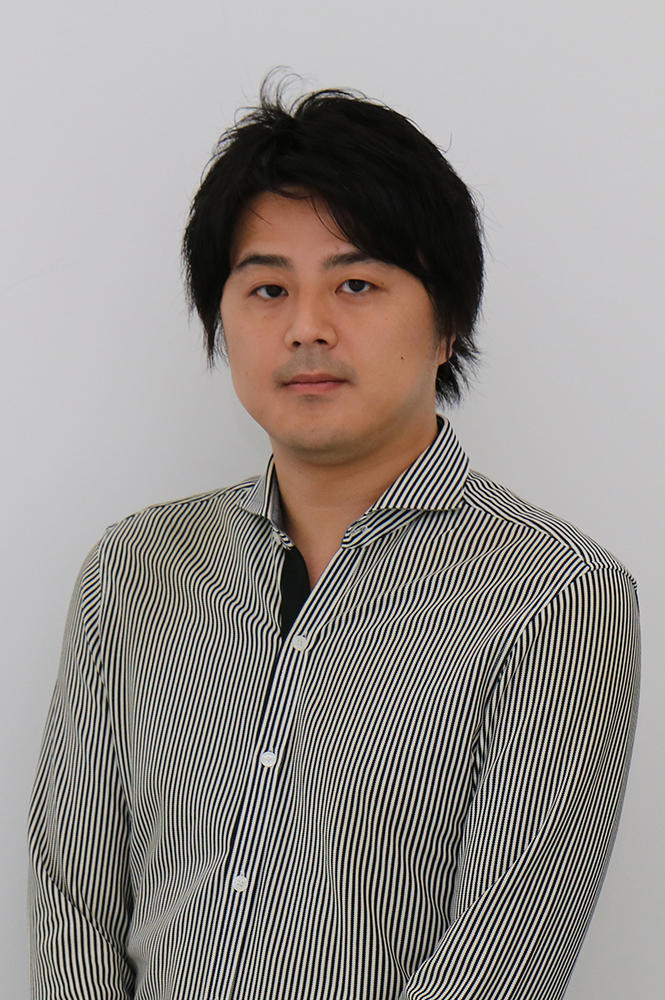- Viewpoints
- Services
In April 2016 Hakuhodo unveiled the Shoppers Cascade™ Model, a proprietary planning tool that re-energizes sei-katsu-sha‘s shopping behavior. In Part 2 of the interview the four people involved in developing and running the model continue their discussion.
*Click here for Part1

From left: Masato Aoki, Toshiya Kishimura, Kyohei Hasegawa, Satoshi Sato
Preliminary signs in store conveyed via various media : How the Shoppers Cascade™ Model transforms communications!
How have clients reacted now that the model is up and running?
AOKI: While the model has only just gotten off the ground, it’s won accolades for offering advantages to retail distributors and manufacturers alike. Clients also like it because it’s adaptable to a wide range of categories, from beverages and shampoo to oral care and nursing care products. It’s highly versatile.

KISHIMURA: That’s right. Also, understanding in-store behavior is to understand what we most want to know about sei-katsu-sha behavior. And that leads to the question of how to design marketing communication activities not just within the confines of in-store marketing programs but outside the store and online as well, in the context of sei-katsu-sha’s overall lifestyle. So we believe we can offer more refined recommendations to clients.
AOKI: Another thing clients like is the ability to identify people who are smart about choosing products in store — albeit not that many in terms of sample size — that is, to identify preliminary signs of a fad. Discovering such signs, and using that discovery in mass marketing, may actually make it possible to create new markets. There’s a tendency to think that in-store research is only applicable to communication activities on the sales floor, but that’s not necessarily the case. The new shopping behaviors now occurring in store are, I believe, truly a form of latent demand. Communicating these via various media will make it possible to develop new methods of mass communication. Normally you begin by considering the product’s features and USP, asking yourself how to convey them to sei-katsu-sha. Instead of starting thus with the product, our approach involves beginning the discovery process with how shopping is already done in store.
SATO: We call that “visualizing smart shoppers”!
Professionals in the fields of shopping behavior design and data marketing team up to offer ideas.
This initiative is a collaborative effort between the SRM Division and the Data-Driven Marketing (DDM) Division. How exactly will the two work together?
SATO: Basically the SRM Division will play the central role in bringing services to clients, especially research services. In the process a variety of data will accumulate, I imagine, whether subconscious survey data or actual data. The DDM and SRM Divisions will utilize that data in jointly solving marketing challenges on behalf of clients or planning their next marketing campaign.

KISHIMURA: Another of the DDM Division’s functions is, based on the findings that can be gleaned from those data, deciding how to exploit them in building a private DMP for the client.
Creating smart, enjoyable shopping behaviors with the Shoppers Cascade™ Model
What to you want to achieve down the road by expanding the Shoppers Cascade™ Model?
AOKI: First, to transform communication activities in store. There’s only a limited amount of information available in store, such as POP displays. But as technology advances, it actually becomes possible to give shoppers a wider range of information. For example, when you take a package of cookies off the shelf, signage could display information on tea. While of course we’ll provide research services as well, as marketing communication professionals it would be nice to create the perfect sales floor. Like, say, devising a technique for synching all kinds of information and data so that if you showed interest in a product and took it off the shelf but then put it back, the product information would appear on your smartphone when you got home. But it wouldn’t do so in an obnoxious way. Something you meant to buy but forgot to would pop up on your smartphone afterwards, and you’d think, “Right! That’s what I wanted to know.” Then you’d click to obtain more detailed information.
According to findings released by the Hakuhodo Institute of Shopper Insight, people’s wants now quickly yield way to others, and the fact is that more and more people find shopping stressful. That we need to change. [Click here for the Institute of Shopper Insight report (in Japanese).] What we ultimately want to do is once more create smart, enjoyable shopping behaviors in store. In that sense we’re still at the starting line. We still need to take the model much, much further.
SATO: As one of the creators of the Shoppers Cascade™ Model, I’d really like to see it come into more widespread use. To repeat what I said earlier, there really aren’t many things out there that will let both retail distributors and manufacturers, not to mention advertising agencies, evaluate marketing activities using a common benchmark. For that reason nothing would please me more than if more companies would adopt the Shoppers Cascade™ Model. I think it should prove useful for advertising agencies as well.

HASEGAWA: This overlaps somewhat with what Aoki-san said, but I think it’s absolutely critical to create a shopping experience that is fun and exciting for sei-katsu-sha. When it comes to communications activities in store, for example, I’m not the least bit happy when a whole bunch of ads appear that are irrelevant to me. I think my next challenge will be devising ways of making shopping truly fun using the cascade model.
KISHIMURA: I think it’d be great if, by means of the Shoppers Cascade™ Model, we could successfully transplant the digital advertising world on the Internet to the out-of-home world. The world of digital advertising on the Internet has its own set of so-called shared benchmarks already in place, and these have underpinned its increasing sophistication over the course of its history. I believe that by exploiting actual, real-time data using the Shoppers Cascade™ Model as a benchmark, we can create communication services applying new technologies in the out-of-home world as well.
AOKI: As the real world goes increasingly digital, marketing activities in digital form on the Internet will increasingly spread to the real world — out of home, in store, etc. We want to start experimenting there in the area of shopping.
END
PROFILES

General Manager, Research and Development Division, Hakuhodo
General Manager, Shopper & Retail Marketing Division, Hakuhodo















